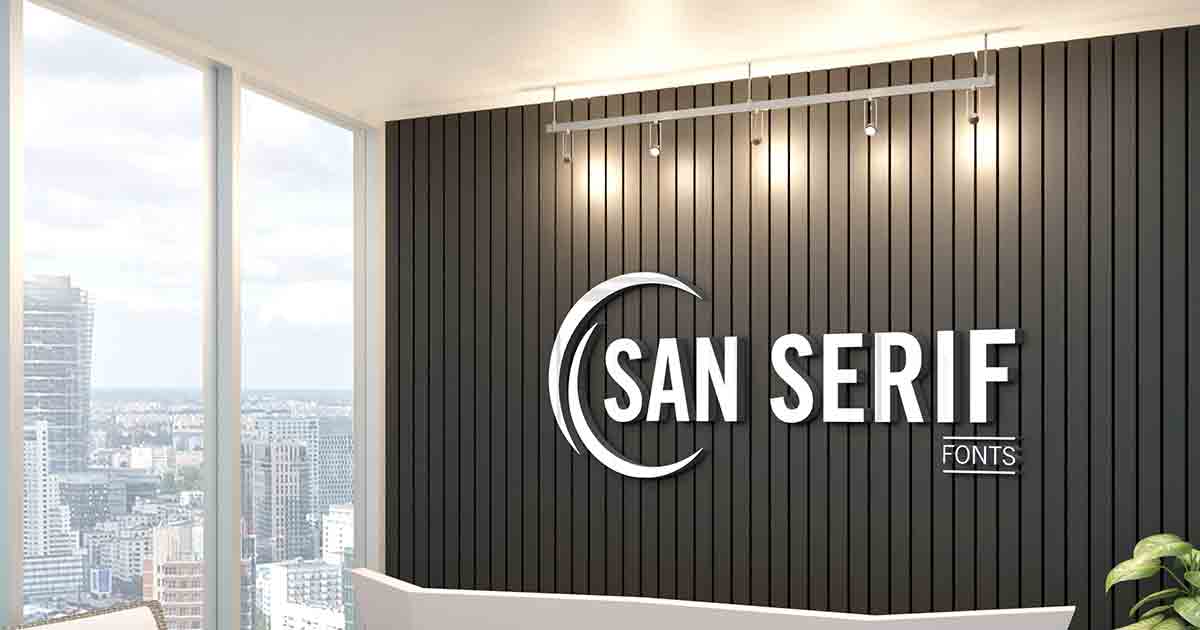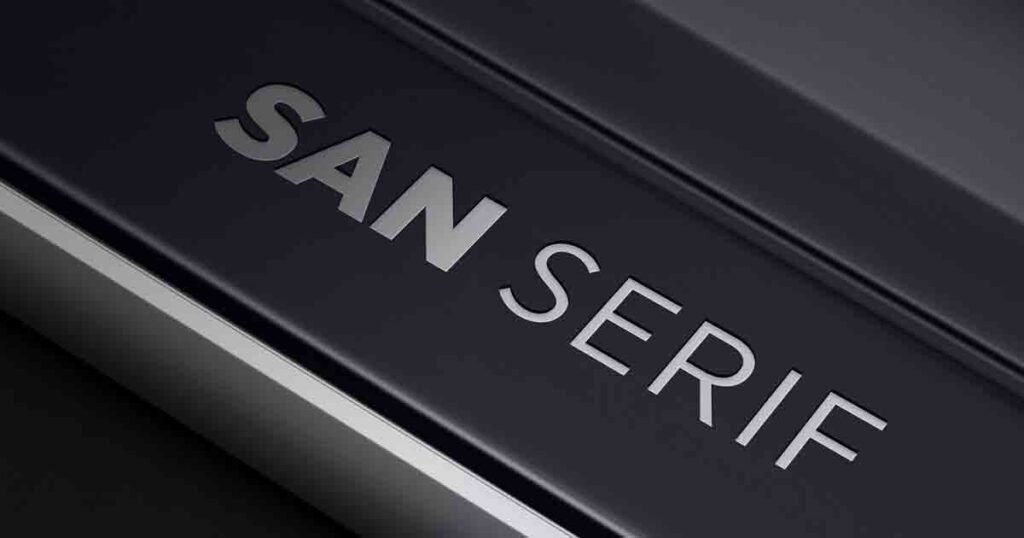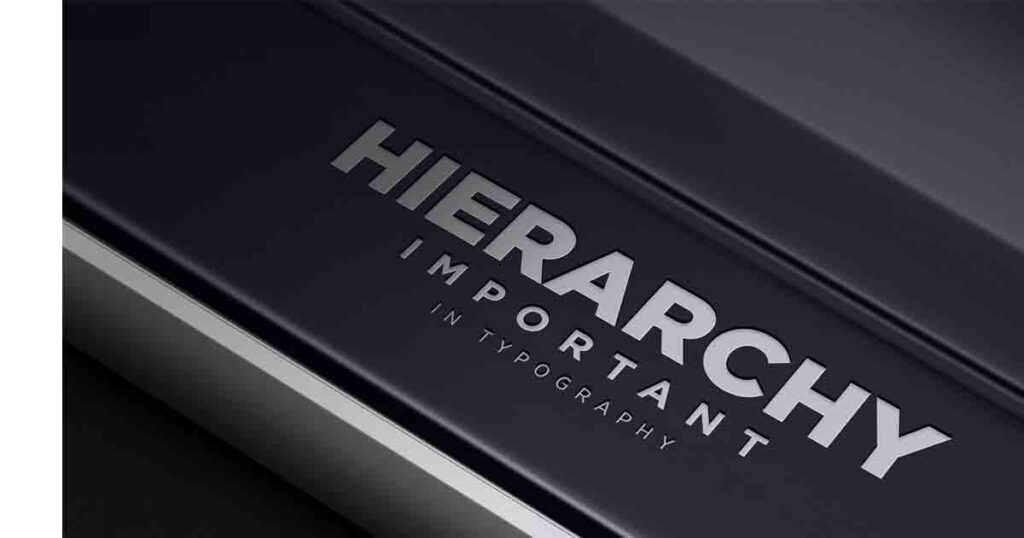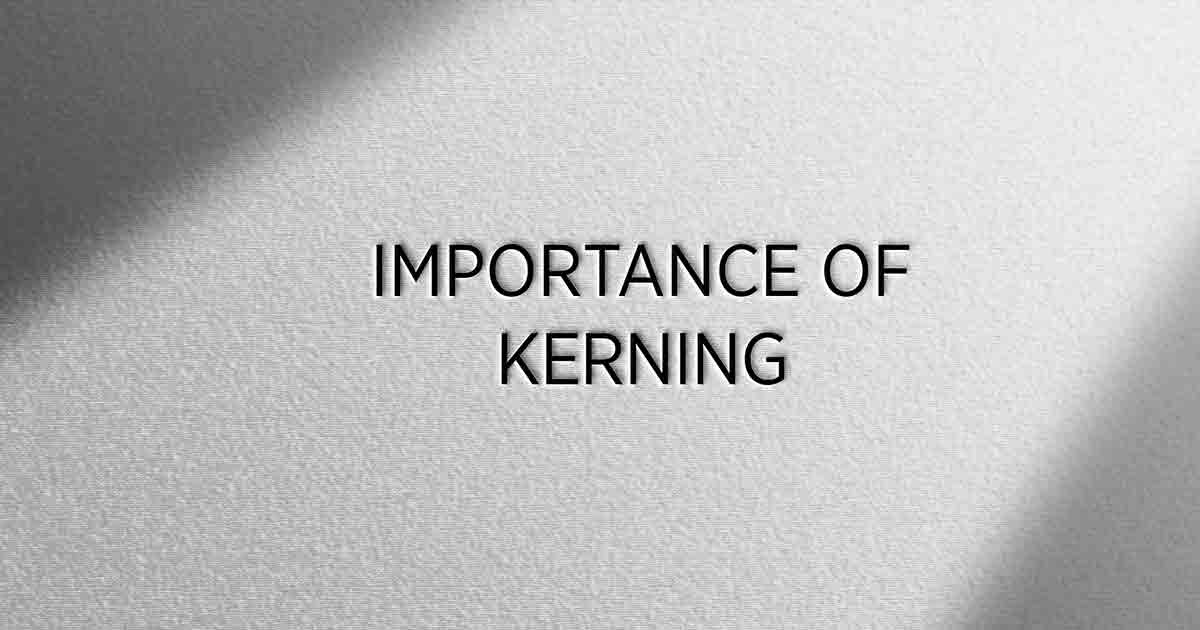The Role of San-Serif Font in Typography

The Role of San-Serif Font in Typography
The Role of San-Serif Font in Typography
Typography is a vital element in design and communication.
It involves arranging and presenting written language, giving words visual form, and enhancing the user experience.
The san-serif font has gained significant prominence among the various font styles available.
In this article post, we will analyze the role of san-serif fonts in typography and their impact on unique design aspects.
Understanding Typography
Before delving into the specific role of san-serif fonts, it is important to understand the broader concept of typography.
Typography encompasses selecting, arranging, and designing typefaces to convey a message effectively.
It includes considerations such as font styles, sizes, spacing, and alignment, all of which contribute to the readability and aesthetics of written content.
Serif and Sans-Serif Fonts
When discussing typography, it is common to categorize fonts into two broad categories: serif and sans-serif.
Serif fonts have small decorative lines, or serifs, at the ends of strokes, while sans-serif fonts lack these embellishments.
Each style has its unique characteristics and conveys a different visual impression.
The Origins of San-Serif Fonts
Sans-serif fonts originated in the late 18th century and experienced a surge in popularity throughout the 19th century.
They emerged as a response to serif fonts’ ornate and intricate designs, providing a simpler and more streamlined alternative.
Initially, designers used sans-serif fonts for signage and display due to their legibility at larger sizes.

Characteristics of San-Serif Fonts
San-serif fonts are known for their clean and modern appearance.
They possess distinct characteristics that differentiate them from serif fonts.
Some common features of san-serif fonts include:
- Absence of serifs: San-serif fonts lack the decorative strokes found in serif fonts, resulting in a cleaner and more minimalistic look.
- Even stroke widths: The strokes in san-serif fonts have uniform thickness throughout, creating a more consistent visual weight.
- Geometric shapes: San-serif fonts often have geometric proportions, featuring straight lines and simple curves.
- Modern and minimalistic feel: The simplicity of san-serif fonts conveys a sense of modernity, making them popular in contemporary design.
The Role of San-Serif Fonts in Typography
San serif fonts play a significant role in typography, influencing various design and communication aspects.
Let’s explore their key roles:
Legibility and Readability
One of the primary functions of san-serif fonts is to enhance legibility and readability.
The absence of serifs and the clean design of san-serif fonts make them highly readable, especially in digital formats and smaller sizes.
Their simplicity makes characters easily distinguishable, improving the overall reading experience.
Usage of Digital Platforms
Sans-serif fonts have become widely used in digital platforms.
The rise of screens and digital interfaces created a need for fonts optimized for on-screen display.
Their simplicity and high legibility make San-serif fonts well-suited for reading on screens, providing a smooth reading experience across different devices.
Branding and Identity
Sans-serif fonts are often used in branding and logo design to convey a modern, minimalistic brand identity.
Many well-known companies and tech giants use san-serif fonts in their logos, associating their brand with simplicity, innovation, and a contemporary aesthetic.

Emphasizing Key Information
San-serif fonts effectively emphasize essential information or important messages within a design.
Their clean and straightforward appearance helps draw attention to specific elements, allowing designers to highlight essential details or calls to action.
Creating Visual Hierarchy
Creating a visual hierarchy in typography is crucial for guiding readers through the content.
With their simplicity and consistent stroke widths, San-serif fonts can establish clear hierarchies.
By varying font sizes, weights, and styles, designers can visually prioritize distinct elements and improve the text’s overall readability.
Conveying Modernity and Simplicity
The clean and contemporary look of san-serif fonts makes them a favored choice for projects that convey a sense of modernity, simplicity, or minimalism.
Whether it’s a website, advertisement, or editorial design, san-serif fonts contribute to a sleek and up-to-date visual aesthetic.
Combining with Other Fonts
San-serif fonts also work well when combined with other font styles.
In order to create visual contrast, you can pair them with serif fonts. You can also use them to balance ornate elements with clean and modern typography when used alongside decorative typefaces.
The versatility of san-serif fonts allows designers to experiment with different combinations and create visually engaging compositions.
Considerations for Font Selection
When selecting san-serif fonts, several factors should be considered.
The intended context, target audience, and overall design goals should influence the font choice.
It’s essential to ensure the selected font aligns with the brand’s personality and the intended message of the content.
Consider legibility, scalability, and cross-platform compatibility as well..
Conclusion
Sans-serif fonts have become an integral part of modern typography, finding extensive use in digital platforms, branding, and various design projects.
Their clean, minimalistic appearance, legibility, and versatility make them a valuable tool for designers and content creators.
By understanding the role of san-serif fonts in typography, we can harness their power to communicate messages and create visually engaging experiences effectively.
FAQs
Q1. Are san-serif fonts always more readable than serif fonts?
While sans-serif fonts are considered more readable in digital formats and smaller sizes, fonts’ readability depends on various factors, including the specific typeface, context, and audience preferences.
Q2. Can I use san-serif fonts for body text in the print design?
Yes, san-serif fonts can be used for body text in print design. However, ensuring that the font chosen provides sufficient legibility and readability at the desired size is essential.
Q3. Can I mix different San Serif fonts in a design?
Yes, you can mix different san-serif fonts to create visual interest and contrast in a design. However, it’s important to maintain consistency and ensure that the fonts complement each other harmoniously.
Q4. Are there any specific industries where san-serif fonts are more commonly used?
San-serif fonts are versatile and can be used in various industries. However, they are often favored in technology, fashion, and contemporary design because of their modern and minimalistic aesthetic.



